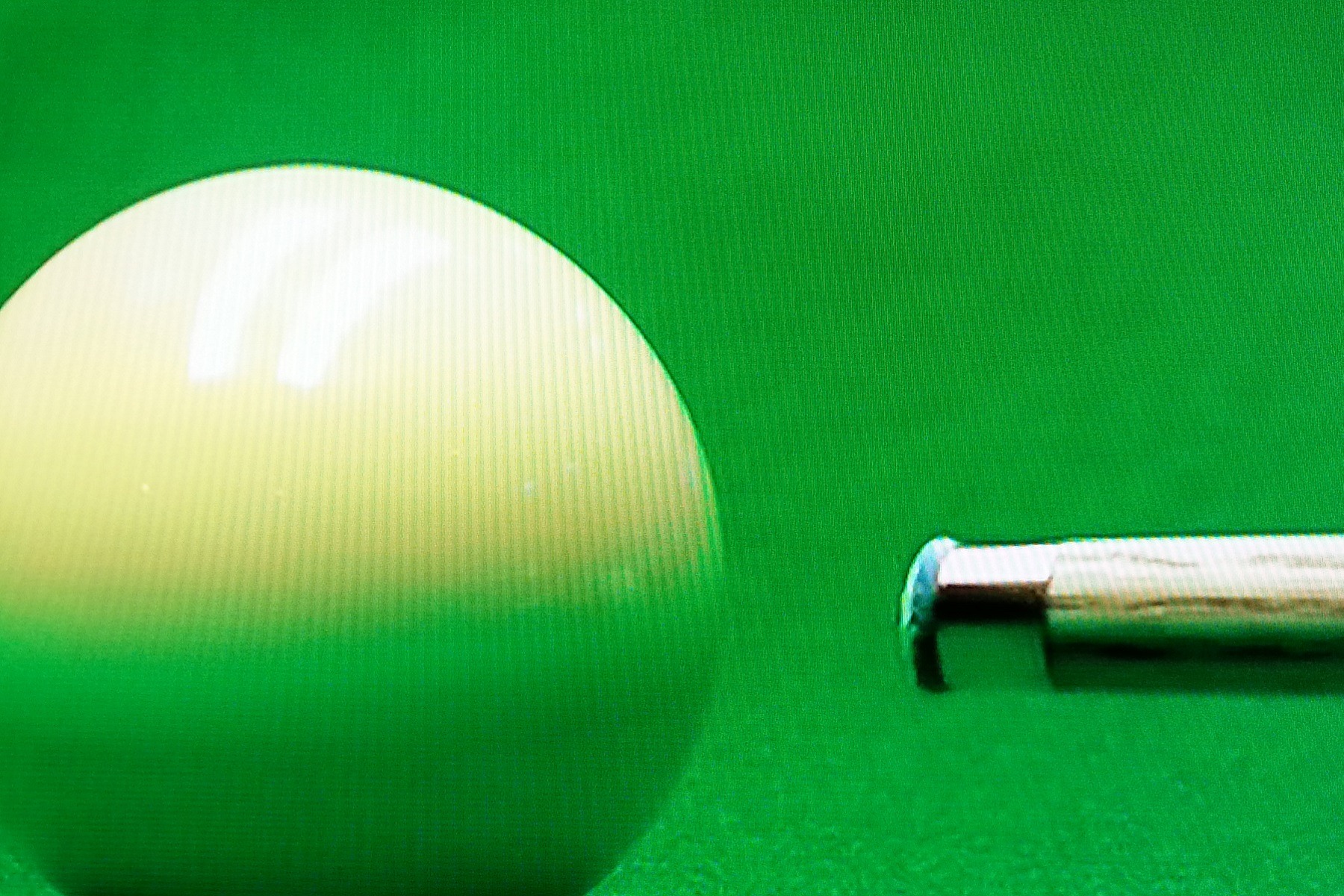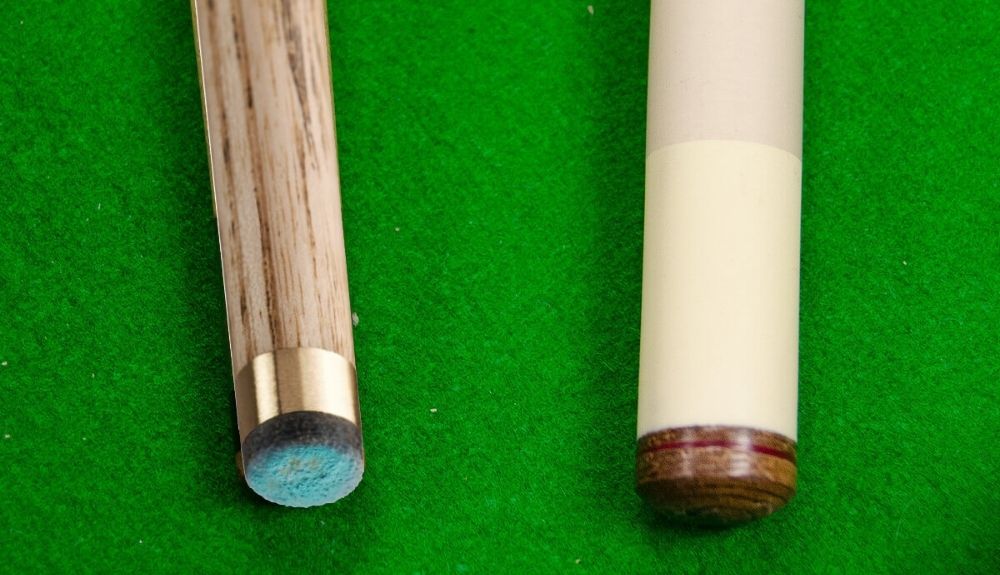Are you chasing that perfect draw shot, the one that leaves your opponent speechless? The quest for the "best cue tip for draw" is a rabbit hole many players fall into, but the truth is far more nuanced than a simple product recommendation.
While the market is flooded with options promising unparalleled backspin and control, the ideal choice is deeply personal, hinging on your unique playing style, technique, and the subtle feedback you crave from your equipment. It's about finding the sweet spot where the tip becomes an extension of your intent, translating your vision into action on the felt.
| Factor | Description |
|---|---|
| Tip Material | Leather (layered, pressed), Phenolic, Synthetic. Leather offers feel and control; Phenolic provides hardness and jump/break power. |
| Tip Hardness | Soft, Medium, Hard. Softer tips grip the cue ball longer for more spin but require more maintenance. Harder tips offer more control and less deformation. |
| Tip Shape | Dime, Nickel, Radius. Affects contact point and ease of applying spin. Flatter shapes (like a dime radius) are often favored for draw shots. |
| Tip Size | 12mm, 13mm, 14mm. Smaller tips offer more precision but require a more accurate stroke. Larger tips provide a bigger contact area for potentially more forgiveness. |
| Technique | Stance, Grip, Bridge, Stroke. No tip can compensate for poor fundamentals. Practice and proper technique are paramount. |
| Cue & Shaft | The cue and shaft's construction influence the overall feel and performance. The tip must complement the cue's characteristics. |
| Maintenance | Shaping, scuffing, and chalking are crucial for maintaining optimal tip performance. |
If you're looking for the best cue tip for draw shots in billiards and pool games, there are some important factors to consider before investing your money. First and foremost, the material of the tip. Different types of cue tips, such as leather, phenolic, and layered tips, offer varying levels of grip and control.
- Who Is Mark Tremontis Wife Privacy Matters Discover
- Who Is Vincent Herbert In 2024 Current Influence Work
Selecting the best cue tip for draw shots isn't a straightforward process; several factors should be considered. Ultimately, finding the best cue tip shape depends on individual preferences and playing styles.
A flat tip shape is commonly preferred by players who specialize in draw shots, as it allows for easier execution of powerful backspin shots. But why is that?
The laws of physics are simple when it comes to angular momentum. To impart significant backspin, you need to strike the cue ball (CB) below its center. A flatter tip profile, like a dime or even a slightly flatter nickel radius, provides a larger contact area at the bottom of the ball, facilitating a more consistent and controlled low-ball hit.
- Who Is Rick Ross Spouse Discovering Their Life 2024
- Lalah Hathaways Children A Look Into Their Lives Amp Legacy Today
Consider the following factors when choosing a cue tip. The most frequent sizes of cue tips are 12mm, 13mm, and 14mm. Honestly, there are some nights where I get more draw and spin out of my 13mm cue.
Smaller tip just means more possible accuracy (i.e. You can hit closer to a specific spot, meaning you can potentially get a little more bottom or side or whatever) , but if you don't have the precision to pull it off (i.e. But, in my travels what I learned about tip contact size is this: It boils down to psi.pressure per square inch.
A smaller tip contact point exerts more pressure to the point of contact on the cue ball than a larger tip. That is why it seems easier to juice the cue ball with a smaller tip. For some players, this is an Essentially giving the player the best of both worlds.
Let's delve into the heart of the matter: materials. Soft cue tips are generally made from tanned leather. The best soft tips are made from pure cow leather. Soft tips are easier to scuff and shape because the leather is less dense. It is much easier for the chalk to stay on a soft leather cue tip. On the flip side, a soft leather cue tip will mushroom and flatten out more quickly than a hard leather tip. This type of cue tip needs to be maintained and replaced more often, sometimes even during the course of a single game.
As the name suggests, hard cue tips are tougher and impact the ball for a very short duration. A harder tip will provide better cue ball control and less deformation during impact. However, they may not offer the same level of grip as softer tips, potentially reducing the amount of spin you can generate. A harder tip will provide better cue ball control and less deformation during Selecting the best cue tip for draw shots.
Popular options like Kamui clear black laminated pool billiard cue tip, Tiger emerald laminated billiard cue tips, and Elk master 13mm pool billiard cue tips each cater to different preferences. I've mostly gravitated towards soft tips and really like the kamuis i had recently. Also really liked a tiger everest i had, but once i replaced it with a second one, it didn't play like the first.
But remember, mastering your cue tip size and maintaining it properly will ultimately enhance your performance and enjoyment of the game. The importance of pool cue tip size cannot be overstated. How does cue tip size impact gameplay? The size of a pool cue tip plays a crucial role in gameplay. The real answer is the practice with right technique makes the draw shot better. As for the tip, the way how the tip feels or gives feedback imparts confidence to the player onto his game.
Ultimately, there is no single, universally agreed-upon "best cue tip for draw shot." It's a journey of experimentation and self-discovery. Remember that while equipment plays a role, it's no substitute for dedicated practice and a solid understanding of the fundamentals. So, experiment, refine your technique, and find the tip that sings to your soul and elevates your draw shot game.
Speaking of technique, lets discuss bridge length. In all seriousness though, in #6, you say to increase your bridge length to get cue lower. It has another advantage.at least for me. It increases your sight radius. I seem to be more accurate with a longer bridge and gripping to the back of the cue. Downside is a longer bridge also exacerbates a poor stroke and therefore cue tip delivery.
Bridge length is a critical component of a consistent stroke. A longer bridge can indeed allow for a lower stance and a more direct line of sight to the cue ball, potentially enhancing accuracy, for some players. A longer bridge demands a smoother, more controlled stroke. Any inconsistencies in your delivery will be amplified, leading to miscuues or unintended side spin.
To truly master the draw shot, you must hit the CB both low and with fast cue speed. With longer distance between the CB and OB, you need more backspin (lower tip) and faster CB speed (see cloth drag). The best trick I know for practicing draw is this:
• set up a simple straight in shot on the side pocket, maybe with the cue ball a foot away from the object ball. Or set up a longer shot in the corner if this is too easy. This drill allows you to focus solely on your stroke and tip placement, without the added pressure of a complex shot.
For more information, see top 10 draw shot tips (bd, march, 2020) and top 10 draw shot tips (bd, may, 2024). These resources offer a wealth of knowledge and insights from seasoned professionals, providing valuable guidance on mastering the art of the draw shot.
Back when I used to play in the 90's and early 2000's, tips like lepro and triangle were what many of us were using, and moori was the only layered tip So then I'll assume that there isn't much difference between pool and carom as far as tip choice goes. I need some advice on cue tips. I recently started playing again and it seems that a lot has changed in the world of cue tips. So, my question to you pool nuts is: What is the best tip on the market rn that I should try
The world of cue tips has undoubtedly evolved since the 90s and early 2000s. The emergence of layered tips, like Moori, revolutionized the game by offering enhanced consistency and performance compared to traditional single-layer tips like LePro and Triangle. The gap between pool and carom tips has narrowed, with many modern tips suitable for both disciplines. The key lies in understanding the specific characteristics of each tip and how they align with your individual playing style.
- Inside Will Smith Diddys Relationship More Than Meets The Eye
- Exploring Bill Burrs Life All About Bill Burrs Spouse Influence


